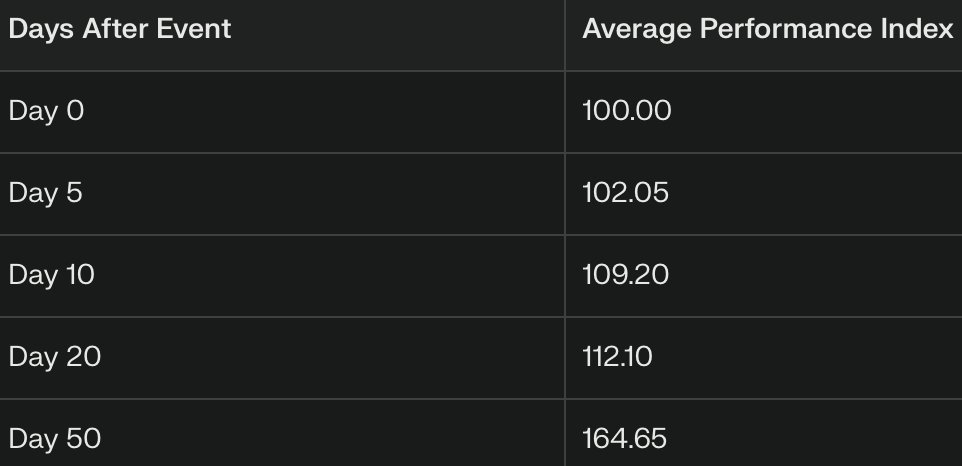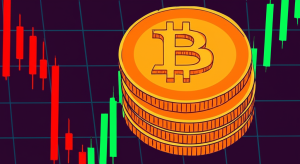
Decoding Bitcoin’s Behavior Post-Geopolitical Shocks and the Signals in Technical Indicators
The ever-intertwined relationship between global geopolitical events and Bitcoin’s market movements has become a fascinating subject for investors and analysts alike. Recent data and technical indicators point to an intriguing pattern of Bitcoin’s performance following major geopolitical risks, intertwined with caution flags raised by market tools such as Bollinger Bands. Today, we delve deep into analyzing these dynamics, demystifying Bitcoin’s resilience and vulnerabilities in the face of global uncertainties.
—
Bitcoin’s Modest Rise After Geopolitical Risks: A Closer Look
Bitcoin’s narrative as a “digital gold” or a safe-haven asset often generates debate. Does it rise or waver when the political and geopolitical landscape becomes rocky? According to a recent analysis cited by the user PixelRainbowNFT, Bitcoin tends to undergo a modest increase during the first 20 days following a major geopolitical risk event. More strikingly, by approximately Day 50 after such an event, Bitcoin’s index reportedly rises to 164.65, indicating a robust performance relative to its baseline.
Why Does Bitcoin React This Way?
This pattern suggests a lag in market sentiment translating geopolitical tension into cryptocurrency demand. The initial modest increase can be traced to cautious investor behavior, where traders gradually move to hedge assets amid uncertainty. Bitcoin’s decentralized nature and immunity to traditional financial controls make it an appealing alternative during times when trust in fiat or conventional assets wanes.
Furthermore, the significant rise by Day 50 hints at a consolidation phase where the accumulation of narrative-driven buying or institutional inflows combustible into strong upward momentum. Unlike immediate reactions seen in stock or forex markets, Bitcoin’s response integrates both investor psychology and technical maturation of market positions over extended periods.
Historical Context Strengthens This Insight
From past geopolitical shocks like the 2016 Brexit referendum or tensions in the Middle East, Bitcoin showed resilience and eventual uptrends after initial volatility. This delayed but pronounced rise fuels the narrative of Bitcoin as a potential hedge, despite its notorious volatility.
—
Bollinger Bands: Unraveling Bitcoin’s Current Technical Signals
Simultaneously, on the technical front, Bitcoin’s recent price movements evoke caution from technical analysts. As highlighted by market commentator KOLYAN TREND, Bollinger Bands — a popular volatility indicator — suggest a possible reversal in Bitcoin’s recent uptrend after its recovery from April lows below $75,000.
What Are Bollinger Bands Telling Us?
Bollinger Bands consist of a middle band (usually a moving average) with two outer bands representing standard deviations. When prices approach or exceed the upper band, it typically indicates overbought conditions, suggesting a potential pullback. Conversely, prices near the lower band might signal oversold conditions.
In Bitcoin’s case, touching or surpassing the upper Bollinger Band post its rebound could imply traders might soon witness profit-taking or correction, risking the sustainability of the current upward momentum.
Interpreting the Market Context
This signal does not imply an inevitable crash but speaks to the heightened volatility and the delicate balance between buyer enthusiasm and profit realization. In other words, the market’s “breathing space” might narrow, presenting increased risk of short-term reversals before any further significant breakthroughs.
It is also worth noting that Bollinger Bands perform best when combined with other indicators and market fundamentals, especially in a crypto market influenced by macroeconomic factors and investor sentiment.
—
Geopolitical Risk, Market Dynamics, and Investor Psychology
A broader view bringing together these indicators and narratives is essential. The geopolitical landscape, with escalating tensions in various regions, factors heavily into investor appetite for risk and alternative assets.
Risk Aversion and Bitcoin Demand
Periods of geopolitical instability typically generate risk aversion. Traditional markets like equities or bonds might suffer due to uncertainties in trade policies, sanctions, or economic slowdowns. Bitcoin, with its growing acceptance, may attract funds looking for diversification and protection against currency debasement.
As noted by Rhinosmart’s market updates, the Middle East crisis and shifts in Fed policy create a complex environment where investors reassess portfolio risks. These shifts invariably interplay with Bitcoin’s valuation, consolidating its role in modern financial ecosystems.
Market Sentiment and the Bitcoin Index
The concept of the Bitcoin index rising significantly 50 days post-major events reflects investor confidence solidifying as initial panic gives way to strategic positioning. This delayed yet potent rise challenges the assumption of Bitcoin’s instant reaction to shocks, underscoring the nuanced psychology driving crypto markets.
—
The Future Play: What Investors Should Watch
Synergy of Technical and Fundamental Analysis
Combining the Bollinger Bands signals with geopolitical event analysis provides a more holistic approach. Investors should monitor:
– Continuation or reversal signals from Bollinger Bands and complementary indicators such as RSI (Relative Strength Index) to gauge momentum shifts.
– News flow on geopolitical developments and central bank policies, especially those influencing inflation and interest rates.
– Volume and institutional activity, often precursors to sustained trends rather than fleeting spikes.
Hedging Strategies and Portfolio Adjustments
Given the observed pattern of a modest initial rise followed by significant gains by Day 50, investors might consider staggered entry points post-geopolitical events, balancing short-term caution with long-term accrual strategies.
At the same time, prudence from technical signals like Bollinger Bands suggests being prepared for volatility bursts and potential dips, emphasizing the importance of stop-loss measures and diversification.
—
A Thought-Provoking Finale: Bitcoin’s Evolving Role Amid Uncertainty
The dual analysis of Bitcoin reveals a fascinating tug-of-war — between Bitcoin’s gradual ascent as a refuge asset in turbulent geopolitical landscapes and the technical realities of market volatility cautioning against complacency.
Bitcoin’s slow-burning yet potent rally after geopolitical shocks underscores its maturation into a global financial instrument shaped by investor psychology, technological adoption, and macroeconomic forces. Meanwhile, technical tools remind us that no asset, Bitcoin included, is immune to short-term corrections even amid promising narratives.
This interplay invites a broader reflection: as Bitcoin integrates further into global markets, its price behavior might never be purely reactive or speculative but woven into an intricate tapestry of global trust, fear, innovation, and adaptation. Understanding this complexity equips investors not simply to chase trends but to engage thoughtfully with Bitcoin’s evolving story.
—
References
– PixelRainbowNFT. “Bitcoin tends to show a modest increase in the first 20 days following a major geopolitical risk event.” June 13, 2025. Twitter Link
– KOLYAN TREND. “Bitcoin Uptrend at Risk as Bollinger Bands Signal Potential Reversal.” June 13, 2025. Twitter Link
– Rhinosmart. “Nasdaq Market Analysis amidst Middle East Crisis & Fed Policy Shifts.” June 13, 2025. Twitter Link
—
These insights suggest a multi-layered approach to Bitcoin investment—where geopolitical context, technical analysis, and investor psychology converge, offering a richer understanding of market moves beyond the headlines.







